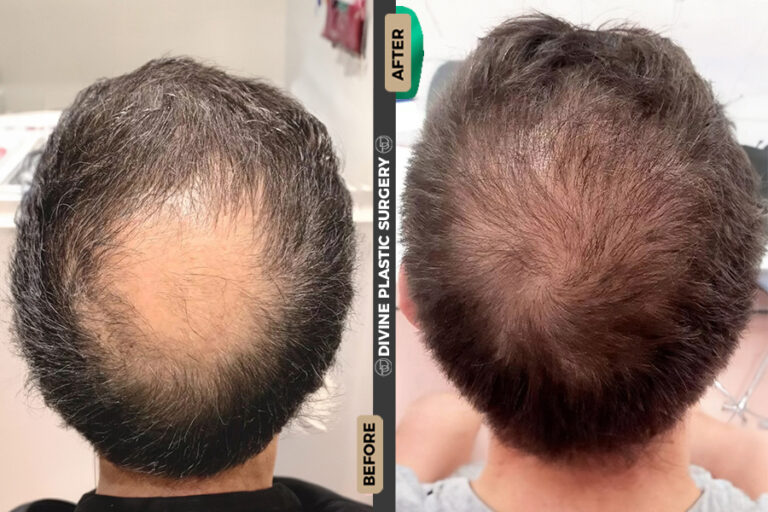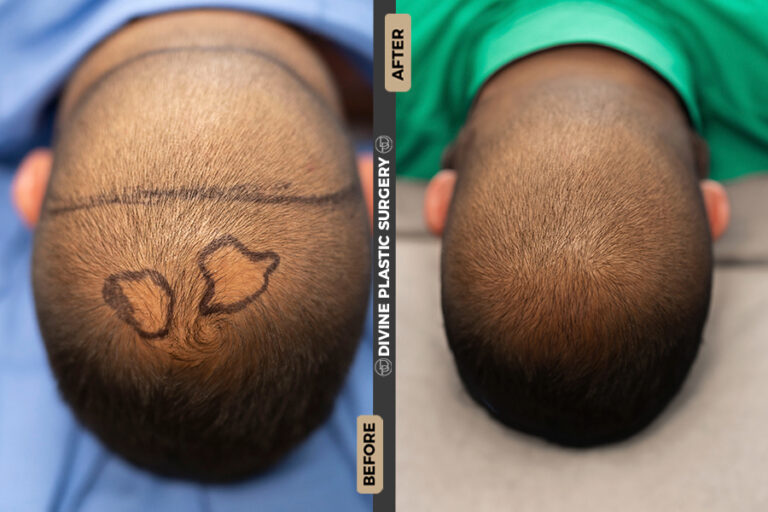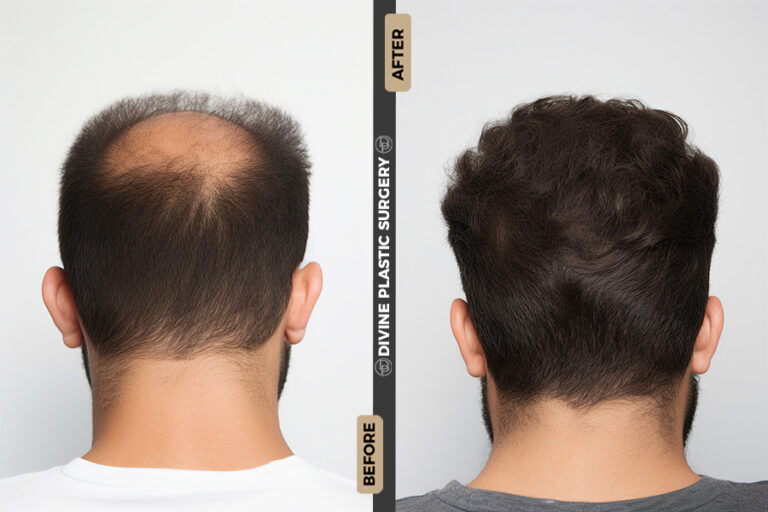
Recover your hair and your self-esteem with the Hair Implant!
What Is A Hair Implant?
Hair Implant, also known as hair transplant, is a medical procedure that seeks to correct permanent hair loss. It consists of moving hair follicles from dense areas of hair to areas where hair loss is evident. This process is performed with surgical meticulousness to ensure natural and long-lasting results.
There are different Hair Implant techniques, among the most common are the FUE (Follicular Unit Extraction) and the FUT technique (Follicular Unit Extraction). In FUE, individual follicles are extracted one by one from the donor area and implanted in the recipient area, while in FUT a strip of skin with follicles is removed and then divided into individual follicular units.
Before undergoing a Hair Implant, it is crucial to conduct a thorough medical evaluation to determine the patient’s suitability and plan the procedure according to the patient’s specific needs. Additionally, it is essential to understand that the Hair Implant does not stop the hair loss process, so additional sessions may be required in the future.
The Hair Implant is an effective and permanent solution for those seeking to restore their hair density and regain confidence in their appearance. However, it is important to seek guidance from medical professionals specialized in these types of procedures to obtain the best results and minimize the associated risks.
Regain your confidence with our state-of-the-art hair implants: the effective and natural solution for abundant, healthy hair. Renew your image and feel amazing every day!
Enjoy The Benefits
It is important to note that individual results may vary from person to person and hair transplant may not be suitable for all cases of hair loss. If you are considering a hair transplant, it is advisable to consult a medical professional to evaluate your options and determine if you are a suitable candidate for the procedure.
Hair implant, also known as hair transplant, offers several benefits for people experiencing hair loss:

Improves appearance: One of the most obvious benefits is the improvement in physical appearance. Hair implant can restore the hairline, cover bald areas and provide a fuller, more youthful appearance.
Increases Confidence: Hair loss can significantly affect a person’s confidence and self-esteem. Restoring lost hair through an implant can help improve self-confidence and overall quality of life.
Natural results: Advances in hair transplant techniques have allowed us to obtain increasingly natural results. Hair follicles are transplanted individually, allowing for hair growth that looks and feels natural.
Safe and effective procedure: Hair transplant is a safe and effective procedure when performed by a qualified surgeon and in an appropriate environment. The success rate of hair transplant is high and the risks are minimal.
Permanent Solution: Unlike some hair loss treatments, such as topical medications or supplements, hair transplant offers a permanent solution. Once the hair follicles are successfully transplanted, they will continue to grow hair naturally.
Minimal maintenance: Once the hair transplant process is completed and the transplanted hair begins to grow, minimal maintenance is required. Transplanted hair can be combed, cut and styled like natural hair.
Before/After





Eligibility And Age
Age and eligibility for a hair implant can vary depending on several factors, including the cause of the hair loss, the patient’s overall health, and expectations of the result. Here are some general considerations:
Age: There is no specific minimum or maximum age for a hair implant. However, it is important that the patient has an established hair loss pattern, as implants are best performed when hair loss has stopped or become minimal. Therefore, hair implants are usually performed on young adults or older adults who have established baldness.
Patient Health: The patient’s overall health is an important factor in eligibility for a hair implant. A thorough medical evaluation will be performed to determine if the patient is suitable for the procedure. Medical conditions such as heart disease, uncontrolled diabetes or bleeding disorders may influence eligibility.
Type of hair loss: The type and cause of hair loss can also influence eligibility for a hair implant. Hair transplant is most effective for androgenetic alopecia, which is the most common cause of hair loss in men and women. Other types of alopecia, such as alopecia areata, may not be suitable for a hair implant due to the autoimmune nature of the disease.
Patient Expectations: It is important for the patient to have realistic expectations about the results of the hair implant. A hair transplant doctor can discuss the patient’s expectations and provide an honest assessment about the results that can be achieved.
In summary, age is not necessarily a determining factor for hair implant eligibility, but several factors should be considered, including the patient’s general health, type of hair loss, and expectations of the result. It is recommended to consult a hair transplant doctor to obtain a personalized evaluation and determine if the hair implant is suitable for you.
Procedure Steps
STEP 1: BEFORE SURGERY
- Make arrangements for someone to drive you to the clinic and back home after the procedure because you are unable to handle it yourself.
- It is very important that the patient come to the clinic without cutting their hair. With all this, it is achieved that the hair is in its natural state at the time of the hair graft intervention.
- Take specific medications or adjust your current medications.
- Complete lab tests within 30 days of your procedure.
- Stop smoking, drinking, or taking drugs.
- Avoid taking aspirin, anti-inflammatory, or herbal supplements as they can increase bleeding.
- Always follow your surgeon’s recommendations before surgery for a successful and speedy recovery.
STEP 2: SURGERY DATE
- Arrive on time for your surgery appointment.
- Come with a companion of 18 years or older.
- Avoid eating or drinking after midnight before your surgery.
- Wash your body with antibacterial soap before surgery.
- Wear loose, comfortable clothing that’s easy to put on and take off on the day of your surgery.
- On the same day of the injection, the patient should avoid touching their head and sleep in a semi-seated position.
STEP 3: AFTER SURGERY
- Keep your incision clean.
- Use a good scar treatment.
- Don’t do any heavy lifting for the next two months after your surgery.
- Don’t do any physical activity for up to 1 week after the surgery. Exercise is not recommended for 15 days after the intervention as it increases the risk of infection due to excessive sweating.
- The scalp is a very sensitive area of our body, and if it has undergone an intervention like this, it must be treated and cicatrized properly. As a result, it is necessary to avoid sunlight exposure.
- Starting the third day, the injerted area can be washed with warm water and soap. During the first seven days of the procedure, avoid aggressively manipulating the transplanted area with your hands or fingers. After 30 days, the patient should resume their regular hair washing routine.
- Follow your surgeon’s recommendations before surgery for a speedy recovery.
Frequently Asked Questions
What does a capilar implant consist of?
A hair implant is a surgical procedure in which hair follicles are transplanted from a donor area (usually the back of the head) to areas where there is hair loss, such as the top or front of the scalp.
Is the hair implant procedure painful?
Local anesthesia is usually administered during the procedure to minimize any discomfort. After surgery, you may experience some discomfort or tenderness in the treated area, but this is usually manageable with prescription medications.
How does the hair implant procedure work?
The procedure involves the extraction of follicular units from the donor area and their transplantation to the recipient area, where hair loss has occurred. This is usually done using techniques such as follicular unit extraction (FUE) or the strip technique (FUT).
How long do the results of a hair implant last?
The results of hair implants are usually permanent, since the transplanted hair is resistant to loss. However, it is important to note that the natural aging process can continue to cause hair loss in other untreated areas.
How should you care for your hair after a hair implant?
Following the procedure, specific care instructions will be provided by the surgeon. This usually includes avoiding vigorous activities, protecting the scalp from the sun, and following a gentle cleansing regimen for the first few weeks.
How long does it take to see results after a hair implant?
The results of hair implant are not immediate. Transplanted hair usually falls out in the first few weeks after the procedure and then begins to grow back within a few months. Final results are usually evident after 6 to 12 months.
What is the difference between the FUE technique and the FUT technique in hair implantation?
The Follicular Unit Extraction (FUE) technique involves the extraction of individual hair follicles one by one, while the Follicular Unit Strip (FUT) technique involves the extraction of a strip of skin with hair follicles from the donor area.
Do we accept medical insurance?
Although we do not accept medical insurance. In Divine plastic surgery, we work with a variety of financing companies so that our patients can have their surgery even if they do not have the funds at the time. Our patient consultants can help you with the application.





